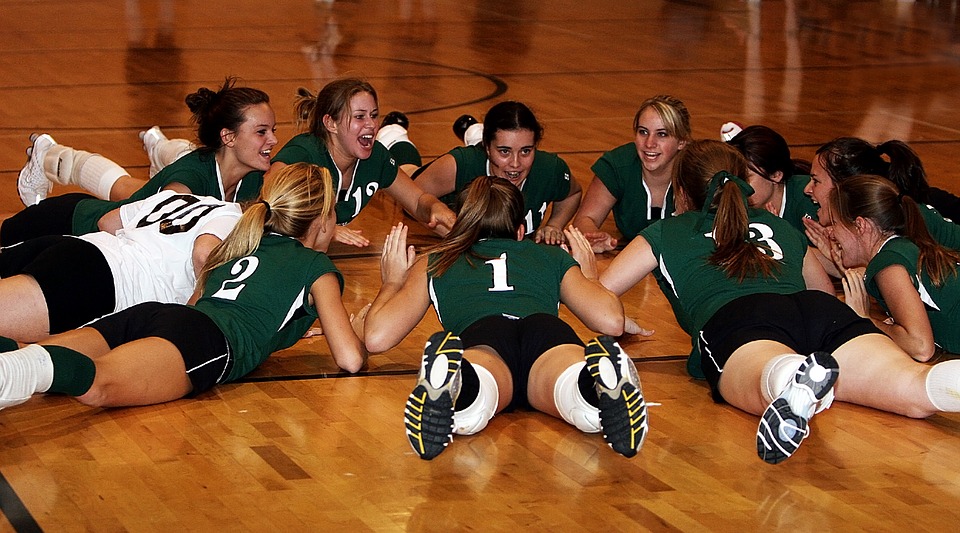Remember how you anticipated moving to high school, or at least middle school, because there you were going to get “real” difficult assignments? Like essays and research papers that adults do, because you will be doing those awesome presentations and talking in front of the class. Well, maybe talking in front of an audience is not the best way to have fun, but making presentations is still cool. Or at least you thought so until you actually were assigned one — and now, you are looking at a blank page at the middle of the night and wondering: “Are presentation skills important?”
Whether you like it or not, these skills are actually important. In the society driven by business, there’s a fair chance that you will be doing presentations, infographics and other ways of representing information in the form of an image in your workplace. The problem is that students in high school and college aren’t actually taught how can presentation skills be improved. But don’t worry, you can fix that on your own.
How to Make Your Presentation Great
1. Visual effects matter.
You may use the fact that you were too excited about your first presentation, so you didn’t fully comprehend what you were doing, but this will work only once. Next time you put a five-page article in one slide and place it over a picture to make it completely unreadable, you won’t be forgiven by your audience. Remember that a presentation is only a nice addition to make your report more interesting and easy to understand. You don’t need to put as much text as humanly possible.
Sometimes a presentation can contain a few words and numbers, and be of a stellar quality. But that takes a lot of practice and good presentation skills. For now, just remember: don’t be obsessed with text. And don’t use pictures as a background, your audience will be thankful for that.
2. Watch out for the fonts.
No “Comic Sans.” Just nope. Seriously. To make your presentation successful, you need to forget that this font ever existed, alongside with all those “handwriting” and “old-runes” style fonts.This may look vary fancy and easy to read for you, because you actually know what is written, but not for your audience.
Use a simple, basic font to make your presentation look neat and academic. You can even google what font is considered to be the best for presentations, as there has been plenty of research done on that topic.
Here are only two tips about visual effects, read our guide on how to create best PowerPoint presentations ever to consider all the points.
3. Test your presentation beforehand.
You work will look like a masterpiece, and there’s nothing wrong with that, but an objective view can be useful for you. We are not saying that you should eliminate all pictures and other cool things. On the contrary, show your presentation to a friend or a family member and ask them to assess whether the text was easily readable and if they liked the design. If the answer is positive to both questions, be proud of yourself and deliver your colorful presentation.
Now It’s Time to Talk
So, you are done with the first stage, and you have a nice, neat-looking PowerPoint presentation ready to be delivered. You have a fair share of pictures and easily readable text, and you are pretty proud of yourself for doing such a good job. But now it’s time to get ready and test whether you have effective presentation skills or some improvements could be made.
- Hook the fish.
Well, it’s pretty much similar to an essay introduction. You need to think of a catchy title and an intriguing phrase to make your audience interested and pay attention to what you are going to say next.
- Mind the difference.
Now the difference between a written and spoken assignment comes. You cannot write a simple essay or a short report, read it aloud and hope that you will be the best in the class, unless it’s a competition in being the most boring one. The way we perceive information via reading and listening differs greatly, and you need to adjust your presentation minding those differences.
First of all, make the sentences shorter. We are sure you have a couple of boring professors, and they have some things in common. One of those things is speaking in long sentences. If you have the text before your eyes, it’s okay (and we mean the full text, not some supporting phrases in the presentation). But when you don’t, your brain simply forgets the start of the sentence when the speaker reaches the end.
- Add emotions.
The second thing which is common for all boring lessons is a lack of emotions. A boring lecturer might not always speak in long sentences, he or she just might not have any emotional emphasis during the speech. Don’t do that! Make some jokes to break the ice, share your personal opinion and overall, try to act like you are talking to your friend about a new film that you enjoyed (or disliked, it doesn’t really matter) so much that you were ecstatic. In that situation you wouldn’t have any problems with adding emotional emphasis, would you?
- Use rhetorical devices.
Ancient Greeks were pretty good at rhetoric, so good that we still refer to their rules and tricks of delivering a great speech. Though these tricks sometimes carry strange names, they are actually simple and well-known, and you might even use them unconsciously. Some of the most common terms are metaphor, antithesis, comparison, allusion, irony or sarcasm, repetition and oxymoron. These devices won’t only show your teacher your effective presentation skills, but they will also make your speech colorful, interesting and attention catching.
What are presentation skills that, in your opinion, everyone should know about? Let us know in the comments section below, and remember that you can always count on professional help from our experts with the most difficult assignments.

